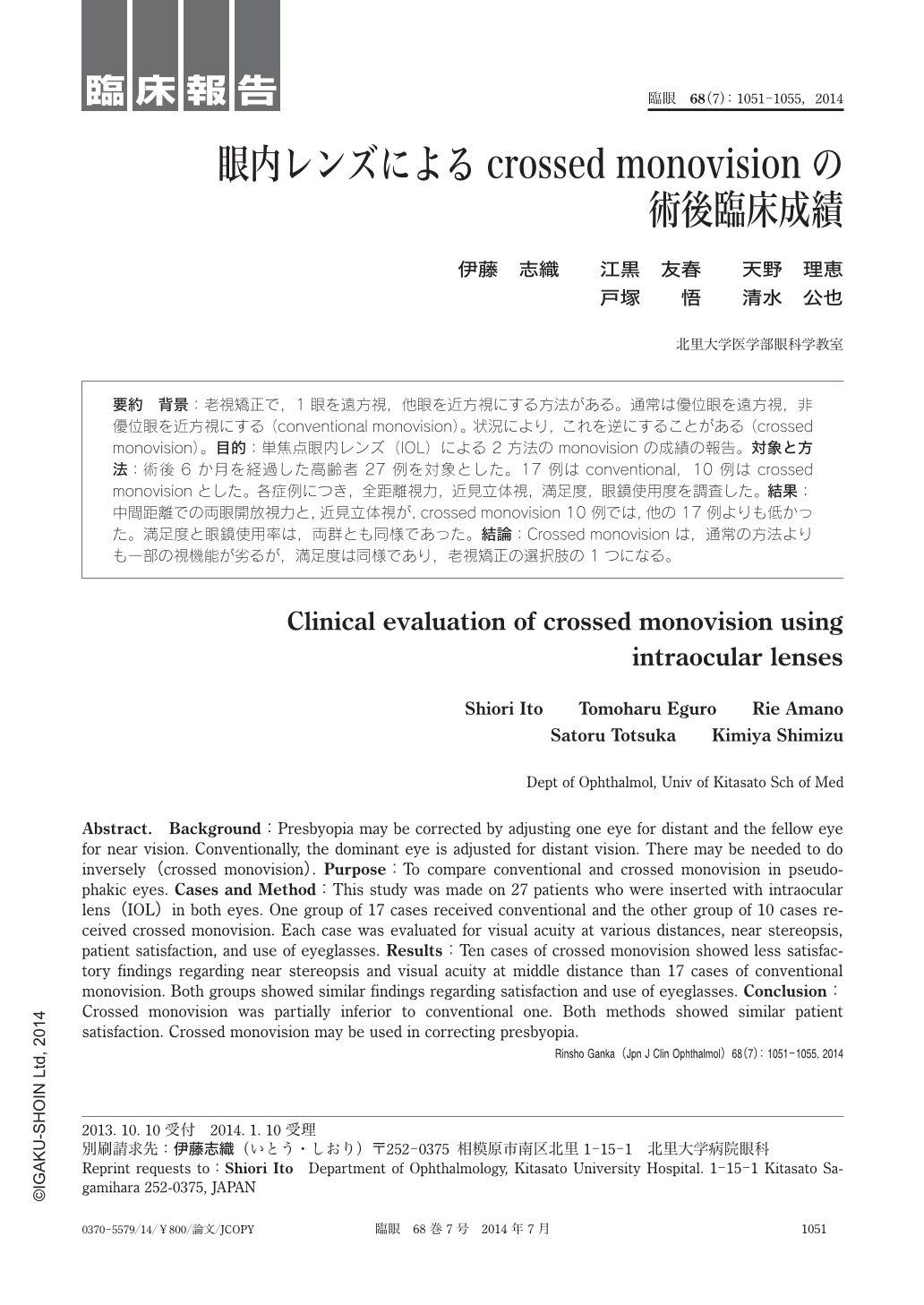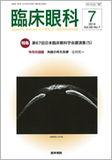Japanese
English
- 有料閲覧
- Abstract 文献概要
- 1ページ目 Look Inside
- 参考文献 Reference
要約 背景:老視矯正で,1眼を遠方視,他眼を近方視にする方法がある。通常は優位眼を遠方視,非優位眼を近方視にする(conventional monovision)。状況により,これを逆にすることがある(crossed monovision)。目的:単焦点眼内レンズ(IOL)による2方法のmonovisionの成績の報告。対象と方法:術後6か月を経過した高齢者27例を対象とした。17例はconventional,10例はcrossed monovisionとした。各症例につき,全距離視力,近見立体視,満足度,眼鏡使用度を調査した。結果:中間距離での両眼開放視力と,近見立体視が,crossed monovision 10例では,他の17例よりも低かった。満足度と眼鏡使用率は,両群とも同様であった。結論:Crossed monovisionは,通常の方法よりも一部の視機能が劣るが,満足度は同様であり,老視矯正の選択肢の1つになる。
Abstract. Background:Presbyopia may be corrected by adjusting one eye for distant and the fellow eye for near vision. Conventionally, the dominant eye is adjusted for distant vision. There may be needed to do inversely(crossed monovision). Purpose:To compare conventional and crossed monovision in pseudophakic eyes. Cases and Method:This study was made on 27 patients who were inserted with intraocular lens(IOL)in both eyes. One group of 17 cases received conventional and the other group of 10 cases received crossed monovision. Each case was evaluated for visual acuity at various distances, near stereopsis, patient satisfaction, and use of eyeglasses. Results:Ten cases of crossed monovision showed less satisfactory findings regarding near stereopsis and visual acuity at middle distance than 17 cases of conventional monovision. Both groups showed similar findings regarding satisfaction and use of eyeglasses. Conclusion:Crossed monovision was partially inferior to conventional one. Both methods showed similar patient satisfaction. Crossed monovision may be used in correcting presbyopia.

Copyright © 2014, Igaku-Shoin Ltd. All rights reserved.


